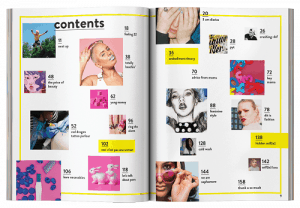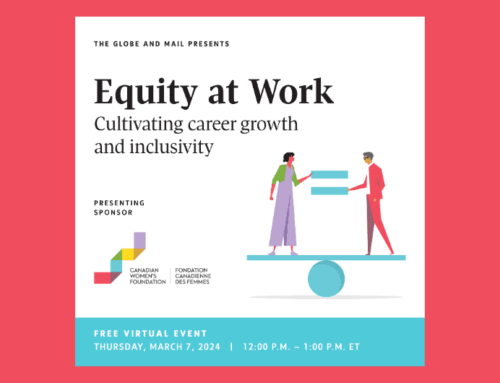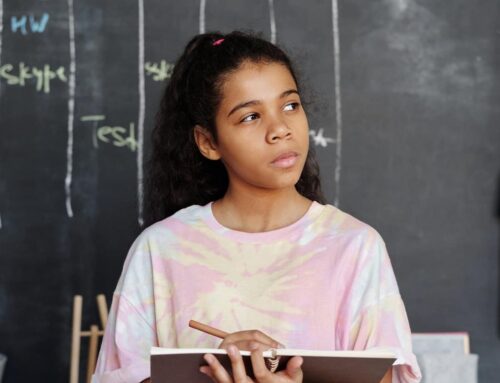When Elizabeth Polanco first heard about Sophomore Magazine, she was hooked. As a graduate of Ryerson’s Fashion Communication program, the feminist fashion lifestyle brand was right up her alley.
Sophomore, she learned, was about more than fashion. The magazine was and continues to be dedicated to elevating the voices of different genders, sexualities, ethnicities, abilities, and other intersections of identity by tackling topics like love, racism, body positivity, and the ethics of fast fashion.
We spoke to her about her new role as Editor, what Sophomore means to her, and what she hopes it represents to women and girls who rarely see themselves in mainstream fashion narratives.
How did you first get involved with Sophomore?
The magazine first started about three years ago as a print issue, and then we moved to digital shortly after. I joined just over two years ago now, and I was so excited by it because the three young women who started it had graduated from my program at Ryerson. Jeanine Brito, our Art Director, had made the print issue her graduating thesis and I was just blown away. I knew I had to do something with them.
Sophomore had a launch party, so I showed up and ran into another girl in my year, Sophie Margolian, who is now the Associate Art Director. She was just starting with them as an intern. I was like, “I need to do something with you guys. I don’t know what you need, but I need to be a part of this.”
I love being able to collaborate with everyone from the team to contributors and navigating where we want to see editorial go. One of the things we’re working on now is a series called #Firsts that our Associate Editor Trang Be created. It’s looking at first experiences of all kinds – the first time leaving a party, a first apartment, a first kiss, a first racist experience.
What is Sophomore doing differently from other fashion magazines or lifestyle brands?
We have a strong focus on telling stories through really smart content that’s accessible, even if it’s academic. It has substance. What’s important to me as an editor is putting out quality content, as opposed to a constant flow of conversation. Sometimes you don’t need to add to a conversation; it might not be your place, or there are already enough voices that are trying to be heard.
We look for content that’s smart and well thought-out and genuine. The contributors make everything greater than the sum of its parts, and we owe everything to them for sure.
How are you working to make sure that diverse voices are represented in Sophomore? How are you actively recruiting writers that bring a variety of perspectives?
I think this aim started from the original team. While the team today is made up of many diverse women, there’s always been this awareness of all of our positions and privileges. When the print publication first came out, I distinctly remember that the first page had a list of the team members, it was a very small team, and they provided a disclaimer that they were all white, although a number of the contributors and cover models were not. Their mandate was to have voices and identities beyond their own represented, and they were acknowledging their privileges and a need to do better. This acknowledgment and openness to critique was something I’d never seen before. A lot of publications are fully led by teams that are entirely white or straight or privileged in other ways, and there’s no awareness of how that might influence the work that’s being put out.
When we pitch something at Sophomore, we very much look at it from all angles and whose perspectives are needed or missing. We never want to toe that line of being exploitative, in terms of the contributors that we’re having take on or tell a story, especially because we run on a volunteer basis. And of course, the team itself has always provided a space of accountability and openness for members like myself who are people of colour, queer, etc. We’ll always welcome critique and know we can always do better, and I think that’s a really important part of running any kind of publication or establishment.
It’s very much like social consciousness or diversity is a profitable trend now, and to me I see other publications seemingly thinking they need a story from a queer writer, or a perspective on Black Lives Matter when it’s timely, and then they publish the token piece and move on. You can tell that it’s disingenuous. For us, this self awareness and clear intent to amplify marginalized groups has always been a consideration and aim.
What do you hope the magazine represents to women and girls who are often left out of the mainstream fashion or lifestyle narrative?
What I love about Sophomore is that we’re having a conversation about this, and we’re fostering a space for writers to find their voices and to talk about things that they might not have a space to talk about, all in a no-judgement zone. I never want us to feel scary to pitch to; I don’t want people to think that we’re going to reject them or that it’s a hard publication to get into. I think that’s something we’ve always communicated since the early stages of the magazine. I just hope we can continue to add to the conversation by making content that’s accessible and genuine and smart. We’re not talking over anybody, we’re letting people speak for themselves. I think that’s at the root of what we do.
If you’re interested in contributing or collaborating with Sophomore, more information can be found here.
Learn More:
- Black Women’s Identity in Canada: Parting the Roots of Black Hair with Simone Wright
- Village Bloggurls: The Male Gaze and the Media
- How One Woman’s Vision Created a Feminist Art Community
Take Action:
- Sign up for our e-newsletter to have our latest stories and resources sent to your inbox.
- Follow us on Facebook and Twitter to join a national conversation about gender equality.







Leave A Comment
You must be logged in to post a comment.